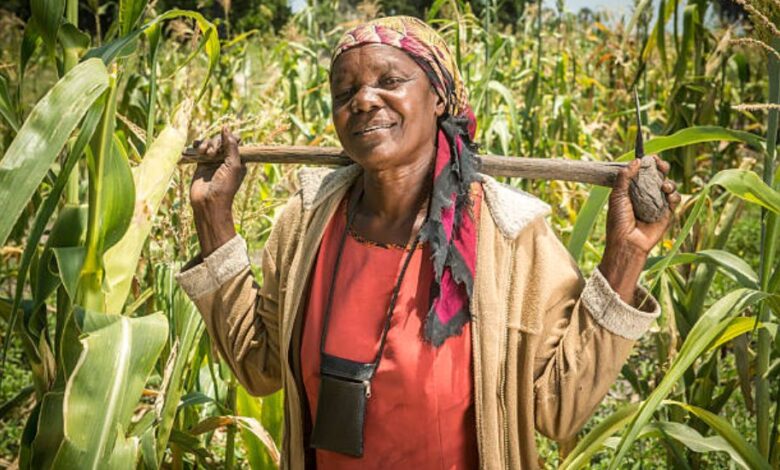Unusual Award N.13: The African Beauty of Gluteal Proportions

In a world teeming with beauty ideals and body image standards, an unconventional accolade like “Unusual Award N.13: Extreme Gluteal Proportions in African Woman” captures attention—not just for its eye-catching title but for the cultural, biological, and social layers it unearths. This isn’t merely an award. It is a commentary on body diversity, cultural appreciation, biological uniqueness, and the evolving definitions of beauty across the globe.
This article explores the significance of this so-called “unusual award,” examining the anthropological, historical, scientific, and cultural perspectives surrounding the subject of extreme gluteal proportions in African women.
1. Understanding the Term: What Does the Award Signify?
The title Unusual Award N.13 is not a formal institutional recognition. Instead, it represents a symbolic or social media-driven trend that celebrates extraordinary physical features outside mainstream beauty norms. In this case, it centers on gluteal hypertrophy or steatopygia—the natural, prominent development of fat deposits in the buttocks, a trait found predominantly among certain African populations.
Rather than mocking or objectifying, the award—when interpreted through a respectful and anthropological lens—highlights body acceptance, genetic variation, and the cultural celebration of natural features.
2. Steatopygia: The Science Behind the Shape
Scientifically, steatopygia refers to the significant accumulation of adipose (fat) tissue in the buttocks and upper thighs. This is a genetic trait historically found in groups like the Khoisan people of Southern Africa.
Evolutionary Theories
Anthropologists propose that steatopygia may have developed as an evolutionary adaptation—helping to store energy in arid climates while maintaining mobility. Unlike abdominal fat (linked to health risks), gluteofemoral fat is metabolically safer.
Additionally, evolutionary psychology theorizes that pronounced hips and buttocks might have historically signaled fertility and health, factors considered attractive in mate selection.
3. African Traditions and Gluteal Aesthetics
In various African cultures, fuller hips and buttocks have long been celebrated as symbols of:
-
Fertility and womanhood
-
Health and prosperity
-
Beauty and sexual maturity
Traditional African sculptures, paintings, and ceremonial dances often emphasize or exalt these body features. For example:
-
In some Zulu and Xhosa rituals, female dancers with pronounced gluteal features are seen as prime examples of beauty.
-
Congolese wooden art from the 19th century often sculpted women with broad hips and buttocks as representations of fertility goddesses or matriarchs.
Thus, the concept is far from “unusual” in the African context. It is deeply woven into aesthetics, spirituality, and tradition.
4. From Shame to Fame: The Global Evolution of Gluteal Standards
Colonial Misrepresentation
During the 19th century, European colonial narratives distorted African body features. Perhaps the most tragic case is that of Sarah Baartman, a Khoikhoi woman exhibited across Europe as the “Hottentot Venus” due to her prominent buttocks. She was objectified, ridiculed, and dehumanized—her body dissected posthumously by European scientists.
What was natural and celebrated in her culture became exoticized and degraded under the Western gaze.
Modern Media and the Global Shift
In recent decades, the global beauty standard has slowly shifted. Once marginalized traits like fuller hips and round buttocks are now popularized by celebrities such as:
-
Beyoncé
-
Nicki Minaj
-
Kim Kardashian
-
Megan Thee Stallion
Social media, especially Instagram and TikTok, has created a digital arena where curvier bodies are celebrated and often monetized. Ironically, the same features once mocked in African women are now desired in Western beauty trends.
This raises critical questions about cultural appropriation, body commodification, and authenticity.
5. Cultural Identity vs. Fetishization
While some celebrate the “Unusual Award N.13” as a lighthearted nod to body diversity, others raise important concerns:
-
Is it empowering or objectifying?
-
Does it celebrate natural diversity or reduce identity to a physical trait?
-
Is it amplifying African beauty, or exploiting it for entertainment?
African women have historically been hyper-sexualized and exoticized in global media. Even positive attention can turn problematic when reduced to body parts rather than holistic personhood.
To appreciate the award responsibly, one must recognize the history, heritage, and humanity behind the feature—not just the silhouette.
6. The Body Positivity Movement and African Women
The body positivity movement, while originally rooted in Black and plus-size advocacy, has grown into a worldwide effort encouraging people to love and accept their natural bodies.
African women with naturally fuller figures are reclaiming the narrative:
-
Influencers and activists use hashtags like #AfricanCurves, #NaturalBody, and #BlackGirlMagic.
-
African designers are showcasing body-inclusive fashion that celebrates traditional silhouettes.
-
Discussions on post-colonial beauty reclaim Black femininity and redefine glamour outside of Eurocentric ideals.
In this context, the award can be seen as part of a wider cultural reclamation, where once-marginalized traits are being celebrated on women’s own terms.
7. Fashion, Fame, and Fitness: A New Gluteal Renaissance
Fashion and entertainment industries now embrace fuller body shapes more than ever:
-
African models like Precious Lee and Lesego Legobane (Thickleeyonce) defy runway norms.
-
African fashion weeks increasingly include models of all body sizes.
-
Fitness trends that build gluteal muscles have soared, with influencers often mimicking natural African body shapes.
But again, this poses a contradiction. Are people celebrating African bodies—or trying to artificially mimic them?
The cosmetic surgery boom—especially Brazilian Butt Lifts (BBLs)—reveals how far the beauty industry will go to emulate a feature that African women often have naturally.
8. The Digital Age: Memes, Virality, and the Award’s Pop Culture Impact
The “Unusual Award N.13” gained traction through memes, video compilations, and blog articles. Clips highlighting African women with extraordinary curves often go viral on platforms like YouTube, TikTok, and Facebook.
While some clips focus on admiration or awe, others teeter into voyeurism. There is a fine line between celebration and spectacle.
Digital culture thrives on the “unusual,” but we must ask: Are we watching to appreciate or to exoticize?
Creators and bloggers have a responsibility to frame their content ethically—offering context, consent, and cultural understanding.9. Real Women, Real Stories
Behind the viral videos and online applause are real African women—mothers, entrepreneurs, dancers, students—whose bodies are not costumes or caricatures.
Some embrace the attention as confidence-boosting; others feel exposed or mocked.
African voices must remain central in conversations about African bodies. Whether in celebrating beauty, defining fashion, or awarding titles, representation must include authentic narratives from those being represented.
10. Conclusion: Beyond the Curves, Toward a Deeper Understanding
Unusual Award N.13: Extreme Gluteal Proportions in African Woman is more than a catchy phrase. It opens up global conversations about:
-
Genetic beauty vs. surgical imitation
-
Celebration vs. objectification
-
Representation vs. exploitation
-
Cultural ownership vs. appropriation
To appreciate African women with naturally extreme gluteal proportions is to honor their heritage, biology, and agency. It is to see beyond the curves and understand the deep-rooted narratives of survival, strength, beauty, and resilience.
In the end, what’s “unusual” is simply unique to one context and deeply rooted in another. And what we call a “trend” might actually be a legacy passed through generations.
This article is presented by The Globe Gist, where stories of diversity, culture, and global identity find their rightful voice.
Thanks for read our article if ou want more like this kind of article visit our site The Globe Gist, and comment us



